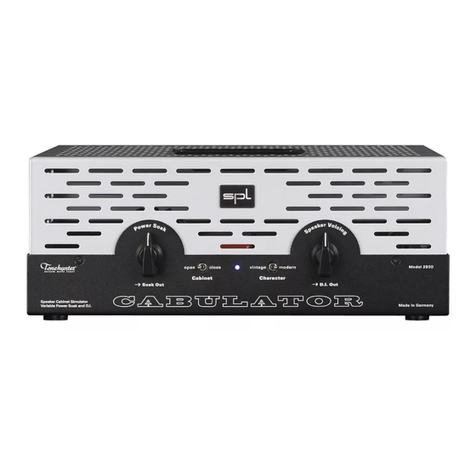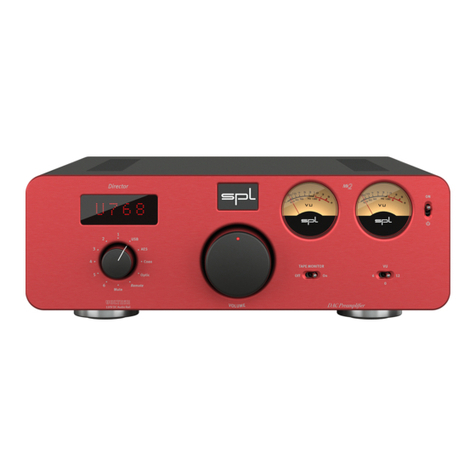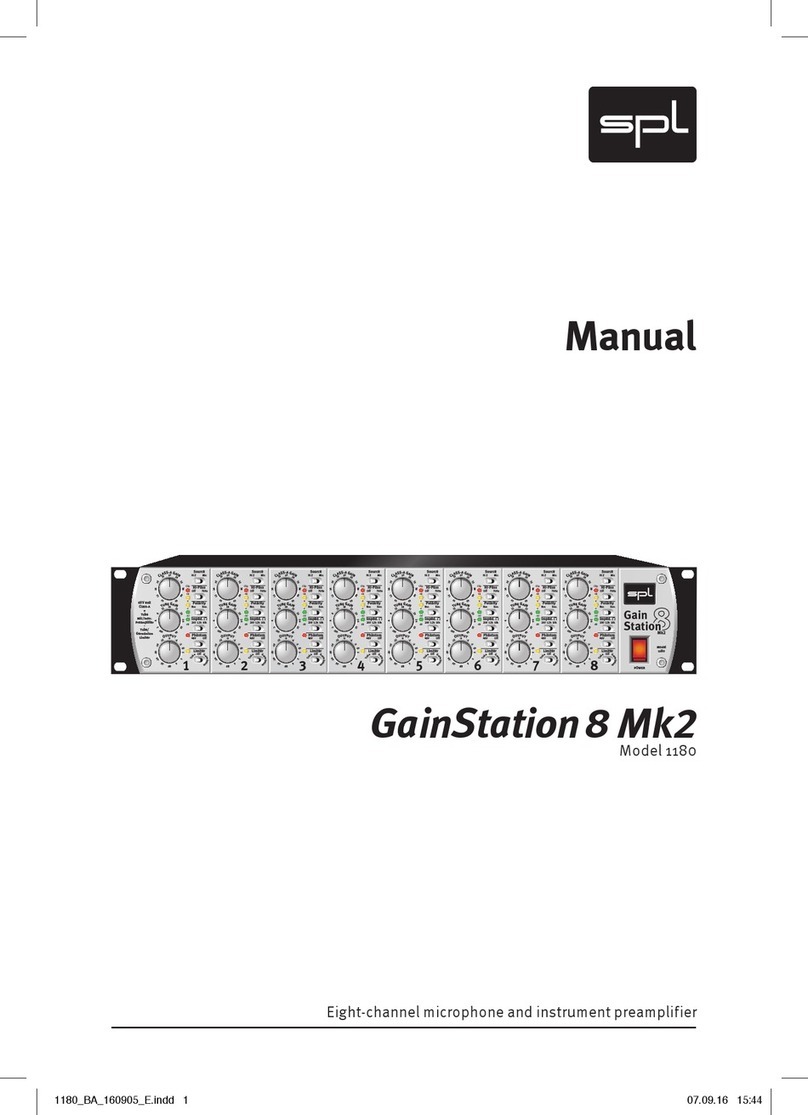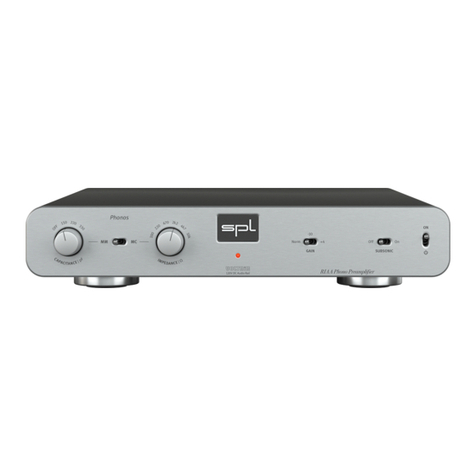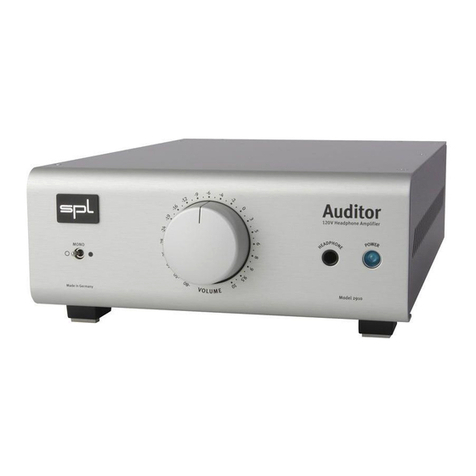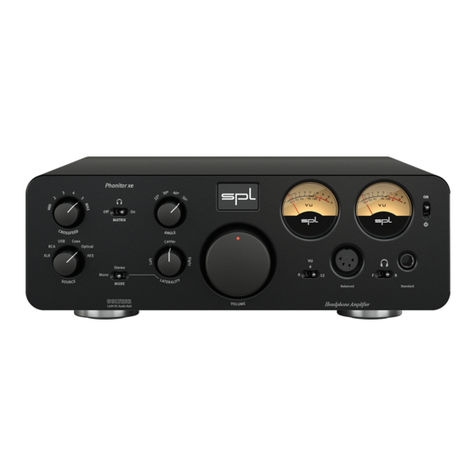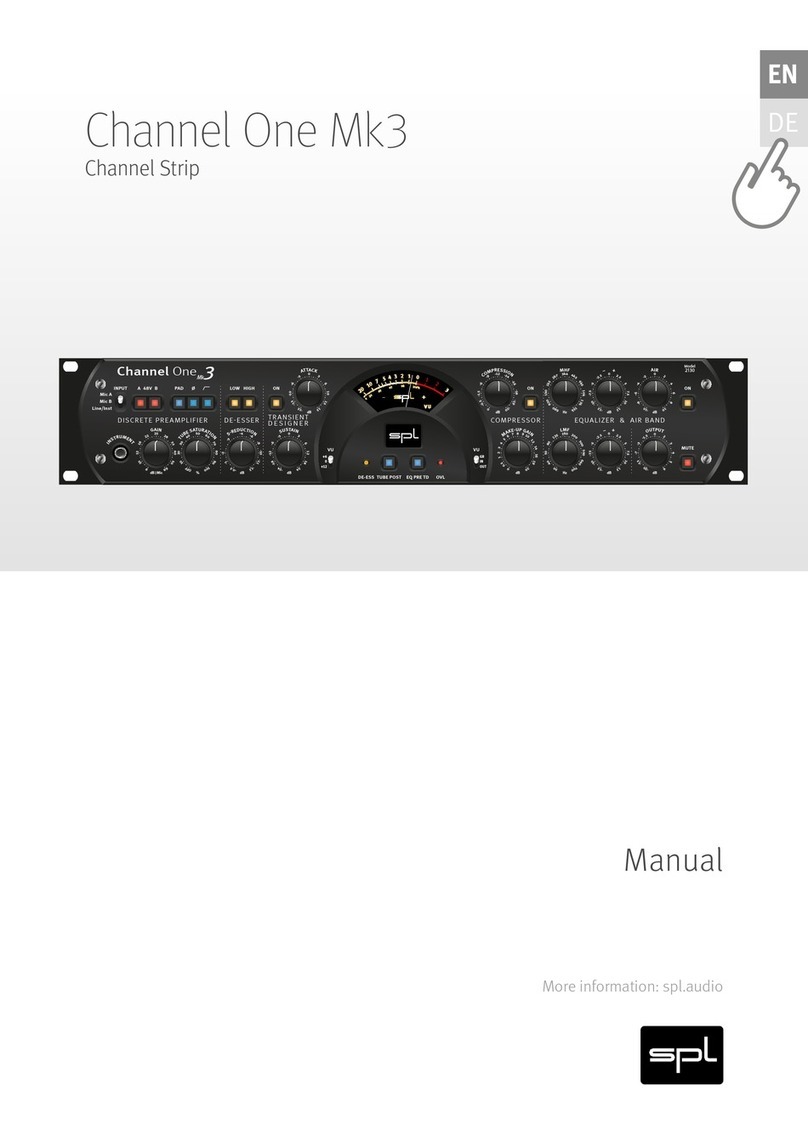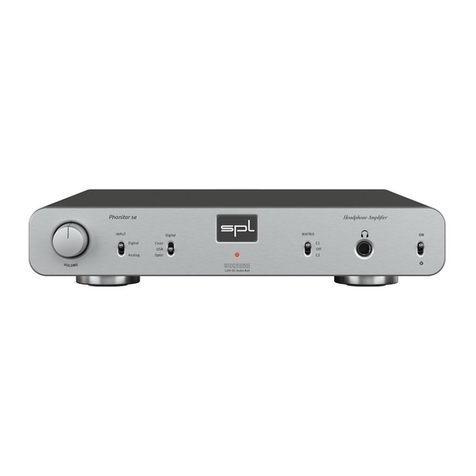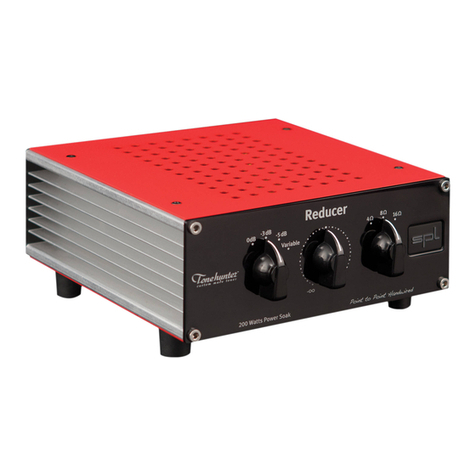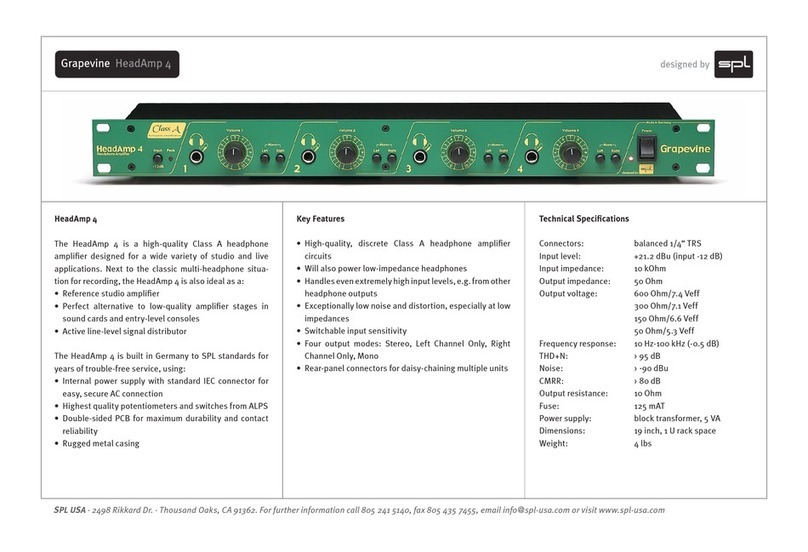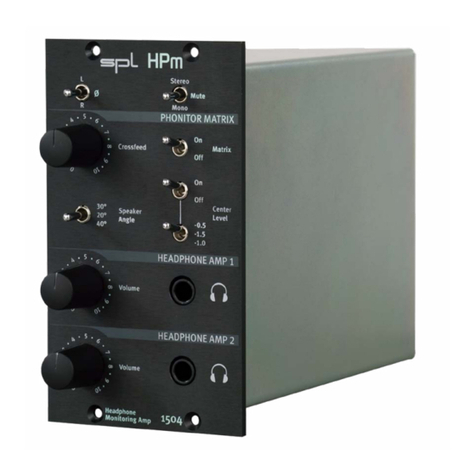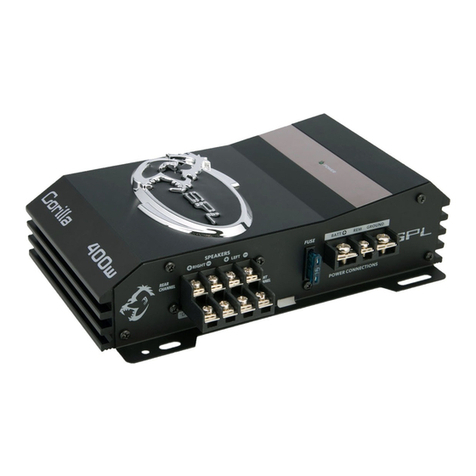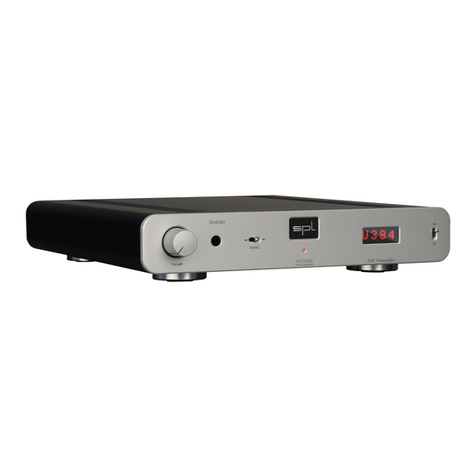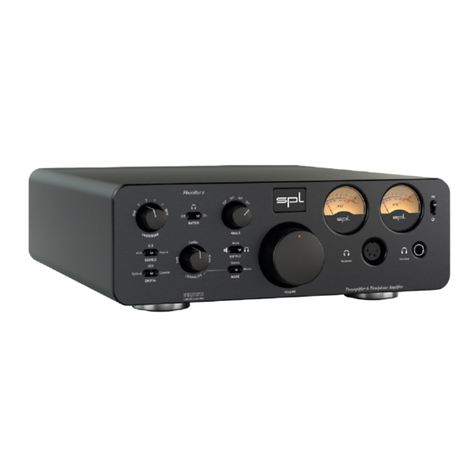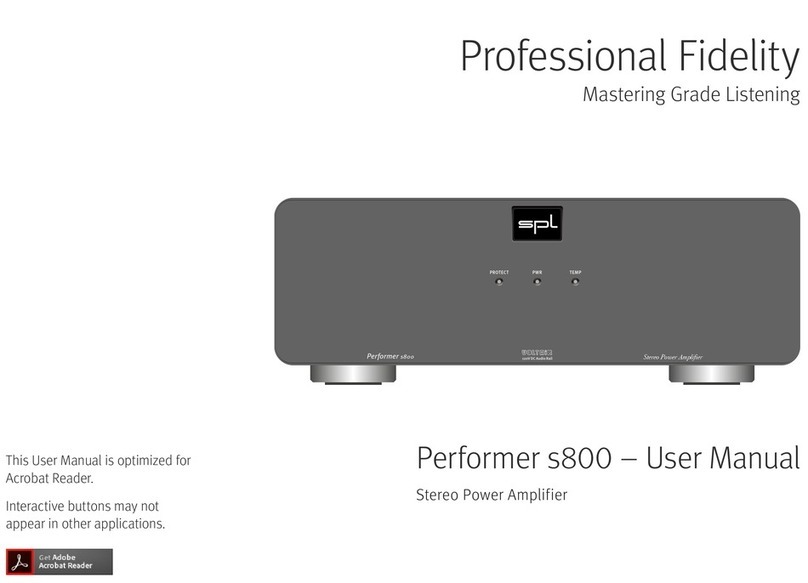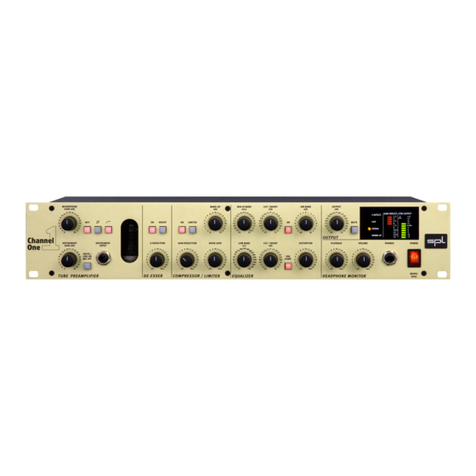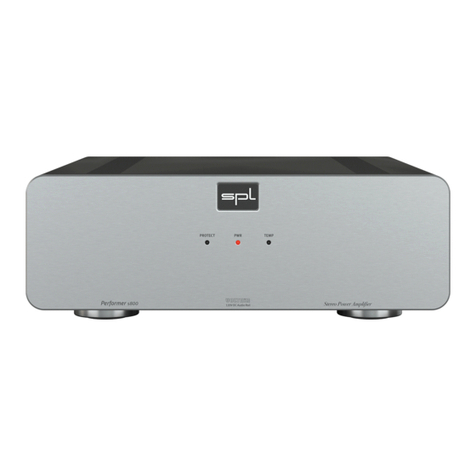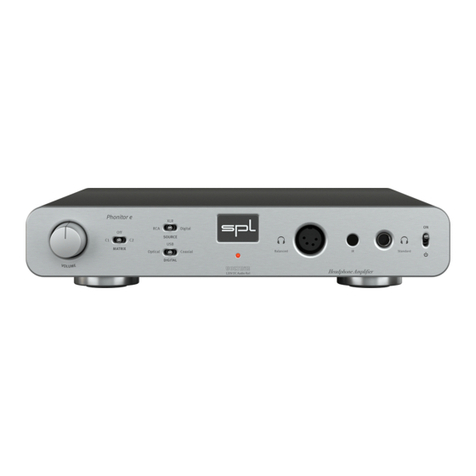
2
Welcome
and thank you for choosing the Phonitorx.
The Phonitor x is the ultimate headphone amplifier. It offers connections for headphones operated both balanced
and unbalanced. With up to . W output power the Phonitor x delivers an impressive performance.
The Phonitor x is not just a headphone amplifier, but also an excellent preamplifier that can drive power amplifiers
or active speakers.
VOLTAiR technology is what we also call the SPL V Rail Technology within the Professional Fidelity series. This
makes the Phonitorx an outstandig device in terms of dynamic range, signal-to-noise ratio and headroom delivering
an exceptional sound experience with invincible serenity, transparancy and realness.
L
A
T
E
R
A
L
I
T
Y
Mono
Stereo
Phonitor
x
V
O
L
U
M
E
M
I
N
2
3
4
5
M
A
X
Off On
MAT RI X
Mute
SOURCE
MODE
OUTPUT
Digital
RCA
XLR
DIG ITAL
Coaxial
Optical
USB
C
R
O
S
S
F
E
E
D
2
2
°
3
0
°
4
0
°
5
5
°
A
N
G
L
E
L
e
f
t
C
e
n
t
e
r
R
i
g
h
t
VOLTAiR
120V DC Au dio Rail Preamplifier & Headphone Amplifier
StandardBalanced
ON
Phonitor x
Serial
Number
Made in Germany
~ 115V AC / ~230VAC, 50 Hz / 60Hz, P max. 45 W
R
B
A
PGM
VOLUME
Refer to
Manual Connect to SPL
Power Amp(s) for
remote power on/off
AVIS: RISQUE DE CHOC ÉLECTRIQUE • NE PAS OUV RIR
RISK OF ELECTRIC SHOCK
DO NOT OPEN
CAUTION
Fuses:
Voltage Selection:
230V AC: T 500 mA L 250 V
115V AC: T 1 A L 250 V
1. Remove Fuse Holder
2. Exchange Fuses
3. Flip Over 4. Reinstall XLRs: balanced, Pin 2 = Hot (+)
For unbalanced operation
bridge Pin 3 to GND.
RCAs: Unbalanced, Tip = Hot (+)
WIRING
ON BOT TOM SIDE:
DIP SWITCHES
1 ON: HP Out +22dB
2 ON: HP Out +12dB
3 ON: VU 0 = +10dB
4 ON: XLR Direct Out
5 ON: RC A Direct Out
6 ON: AMP CTL power off
when listening to
SPEAKER OUTPUTS
RLRL
ANALOG SOURCES
AMP CTL SPEAKER OUTPUTS
L
R
ANALOG SOURCES DIGITAL SOURCES
LR USBOPTICAL
AMP CTL
R
L
R
L
LL
R
COAX
IR

